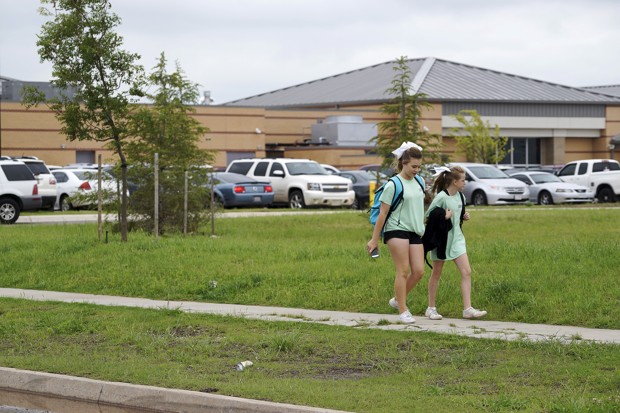The End of the Neighborhood School
Trump’s education budget aims to deliver a big boost to “school choice”—and siphon resources from urban schools in low-income areas.
Donald Trump’s proposed education budget aims to cut spending by 13.5 percent, or $9.2 billion, from the current $68.2 billion budget. It’s the biggest single-year cut a president has tried to make since Reagan attempted to gut the department in 1983. Targeted for the biggest hit: public schools. Specifically, after-school programs, teacher training, foreign languages, and the like would be slashed or eliminated.
Yet the budget gives public schools a way to make some cash: If local districts agree to allow open enrollment, in which parents, regardless of where they live, can send their children to any area public school, the districts will be awarded grants from a $1 billion initiative clunkily dubbed Furthering Options for Children to Unlock Success (FOCUS). When a child moves from one school to another, the local, state, and federal funds attached to them would follow.
FOCUS reflects Education Secretary Betsy DeVos and her signature fixation on “school choice,” whereby students have the option to attend schools different than the one they are zoned for geographically. These schools may be public, including charter schools (as in the case of FOCUS), or they maybe be private schools, including religious schools. Trump and DeVos support supplying parents with vouchers to offset the costs of private schools; the White House budget ups the funding for charter schools and private school choice to the tune of $417 million.
While it’s almost guaranteed Congress won’t pass the budget, the big boost to school choice is a sign of how far the issue has come in the past 15 years, among both Republicans and Democrats. The Obama administration didn’t support private school vouchers, but it did promote charter schools. For instance, Obama’s 2009 Race to the Top program, a $4.35 billion grant that aims to spur and reward innovation in K-12 education, rewards states for allowing the growth of charter schools.
School-choice supporters tout it as a way for parents living in neighborhoods with low-performing schools to send their kids to better schools in low-poverty areas. It’s a strategy generally applied to urban contexts, as rural areas are more likely to have a single school that the community rallies around. And it’s on the rise across the country. “We still have neighborhood attendance zones, and most children in the U.S. attend traditional public schools,” says Matthew Chingos of the Urban Institute. “But 42 The Problem of Geography in School Choice - CityLab:


